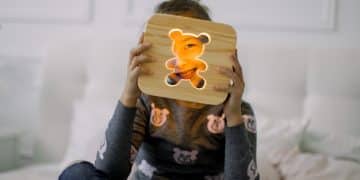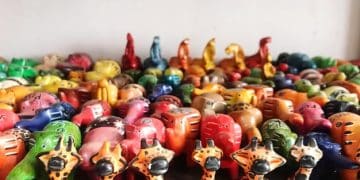Toy Review Secrets: Spot High-Quality Toys Before You Buy
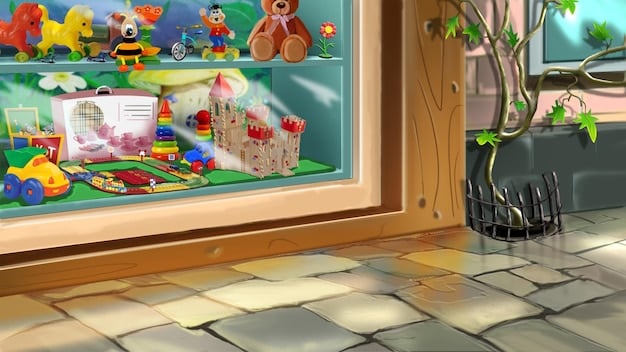
Discover the toy review secrets to identify high-quality, safe, and engaging toys, ensuring you make informed purchasing decisions and provide children with enriching play experiences.
Navigating the world of toys can be overwhelming. How do you ensure you’re picking a toy that’s not only fun but also safe, durable, and educational? Uncover the toy review secrets: how to spot a high-quality toy before you buy, ensuring a worthwhile investment and a happy child.
Understanding Toy Quality: What to Look For
When assessing toy quality, it’s essential to move beyond just aesthetics. True quality encompasses safety, materials, design, and how the toy promotes a child’s development. Understanding these aspects will help you make more informed decisions.
Safety First: Material Matters
The safety of a toy begins with its materials. Look for non-toxic, durable materials that can withstand rough play. Check for certifications like ASTM International or EN71, which indicate that the toy has undergone safety testing.
Design and Construction
A well-designed toy is not only visually appealing but also functionally sound. Inspect the toy for sharp edges, small parts that could be choking hazards, and overall structural integrity. A toy that falls apart easily is not only frustrating but also potentially dangerous.
- Durability: A high-quality toy should withstand repeated use without breaking.
- Non-Toxic Materials: Ensure the toy is made from materials that are safe for children.
- Age Appropriateness: The toy should be suitable for the child’s age and developmental stage.
- Secure Construction: All parts should be securely attached to prevent hazards.
Ultimately, understanding the core components of toy quality – safety, materials, and design – empowers you to make better choices. By prioritizing these factors, you can ensure that the toys you choose are not only fun but also beneficial and safe for the children in your life.
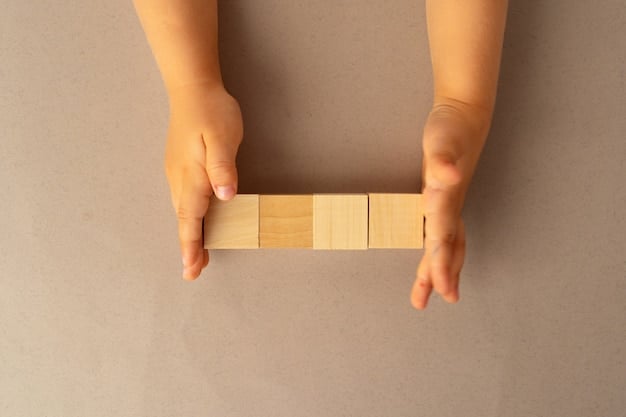
Decoding Toy Labels and Certifications
Toy labels and certifications are your guides to understanding a toy’s safety and suitability. These labels provide valuable information about age recommendations, safety warnings, and compliance with industry standards. Learning to decode these labels is crucial for making informed purchasing decisions.
Age Recommendations
Age recommendations on toy labels are not just suggestions; they are safety guidelines. Toys meant for older children may contain small parts that could be choking hazards for younger kids. Always adhere to the age range specified on the label.
Safety Warnings
Pay close attention to safety warnings. These warnings indicate potential hazards associated with the toy, such as small parts, sharp edges, or strangulation risks. Ignoring these warnings can lead to accidents and injuries.
- ASTM International: Indicates that the toy meets safety standards set by ASTM.
- EN71: A European standard that ensures toys meet specific safety requirements.
- CE Marking: Shows that the toy complies with European safety regulations.
- CPSIA Compliance: Assures that the toy adheres to U.S. safety standards, including lead content limits.
In conclusion, decoding toy labels and certifications is a critical step in ensuring toy safety. By understanding age recommendations, heeding safety warnings, and recognizing certification marks, you can confidently choose toys that are appropriate, safe, and enjoyable for children.
Reading Between the Lines: Online Toy Reviews
Online toy reviews can be a treasure trove of information, offering insights from other parents and caregivers. However, it’s important to approach these reviews with a critical eye. Not all reviews are created equal, and some may be biased or misleading. Learning how to read between the lines can help you extract valuable information and make informed decisions.
Look for Detailed Reviews
Detailed reviews provide specific information about the toy’s quality, durability, and play value. Look for reviews that describe the toy’s features, how it performs, and any issues encountered. Avoid reviews that are vague or generic.
Consider the Source
Pay attention to the source of the review. Reviews from verified purchasers are generally more reliable than those from anonymous users. Also, consider the reviewer’s overall rating history. Are they consistently positive or negative?
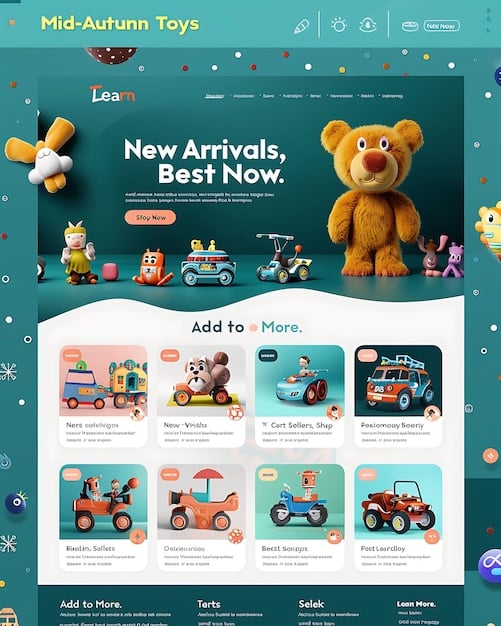
- Verified Purchases: Prioritize reviews from verified buyers for authenticity.
- Balanced Opinions: Look for a mix of positive and negative feedback to get a comprehensive view.
- Consistency: Check if common issues or praises are mentioned repeatedly.
- Reviewer Background: Note if the reviewer identifies as a parent or caregiver for relevant insights.
By mastering the art of reading between the lines in online toy reviews, you can uncover valuable insights that help you make informed purchasing decisions. Approaching reviews with a critical eye and considering the source, content, and patterns of feedback can empower you to choose toys that are truly high-quality and enjoyable for children.
Assessing Toy Materials: Durability and Safety
The materials used in a toy are fundamental to its durability, safety, and overall quality. Knowing how to assess these materials can help you identify toys that are not only fun but also safe and long-lasting. Focus on understanding the properties of different materials and what to look for in terms of quality and safety.
Types of Materials
Toys are made from a variety of materials, including plastic, wood, metal, fabric, and rubber. Each material has its own strengths and weaknesses. Understanding these properties can help you assess the suitability of a toy for a particular child and play style.
Checking for Harmful Substances
One of the most important aspects of assessing toy materials is checking for harmful substances. Look for toys that are labeled as BPA-free, phthalate-free, and lead-free. These substances can be harmful to children’s health, so it’s essential to avoid them.
- Plastic Quality: Look for durable, high-quality plastics that don’t easily break or crack.
- Wood Inspection: Ensure wood is smoothly finished and free of splinters.
- Fabric Considerations: Check for soft, non-toxic, and flame-retardant fabrics.
- Metal Components: Make sure metal parts are rust-resistant and securely attached.
By understanding the properties of different toy materials and checking for harmful substances, you can make informed choices that prioritize your child’s safety and enjoyment. Prioritize materials that are durable, non-toxic, and appropriate for the intended age group.
The Play Value Factor: Beyond Just Fun
When selecting toys, it’s essential to consider their play value – that is, the extent to which they engage, entertain, and contribute to a child’s development. A toy with high play value offers multiple ways to play, encourages creativity, and supports learning. Evaluating play value helps you choose toys that are both fun and enriching.
Encouraging Creativity
Toys that encourage creativity allow children to use their imagination and develop problem-solving skills. Building blocks, art supplies, and dress-up clothes are all examples of toys that foster creativity.
Supporting Learning
Educational toys can help children learn new skills and concepts while having fun. Puzzles, board games, and science kits are examples of toys that support learning. Look for toys that are age-appropriate and align with the child’s interests.
- Skill Development: Toys should foster relevant skills such as problem-solving, coordination, and critical thinking.
- Engagement Time: High play value translates to sustained interest and longer engagement.
- Adaptability: The toy should remain engaging as the child grows and develops.
- Open-Endedness: The toy should not dictate a specific play pattern, allowing for imagination and creativity.
In conclusion, assessing the play value factor is crucial for choosing toys that are both entertaining and beneficial for children. By selecting toys that encourage creativity, support learning, and offer multiple ways to play, you can ensure that children have enriching and rewarding play experiences.
Long-Term Investment: Toys That Grow With Your Child
Choosing toys that grow with your child is a smart investment that can provide years of enjoyment. These toys are designed to adapt to different developmental stages and offer new challenges as the child grows. Investing in such toys can save money in the long run and provide consistent learning and entertainment.
Adaptable Toys
Adaptable toys can be adjusted or modified to suit different age groups and skill levels. For example, a balance bike can be converted from a tricycle to a two-wheeled bike, adapting to the child’s changing abilities.
Timeless Classics
Timeless classics like building blocks, LEGOs, and art supplies never go out of style and can be enjoyed by children of all ages. These toys offer endless possibilities for creativity and imaginative play.
- Multi-Functionality: Toys with multiple uses offer extended play value.
- Skill Progression: The toy should introduce new challenges as the child masters certain skills.
- Durability: Opt for toys built to last through multiple stages of development.
- Versatility: Choose toys easy to incorporate into different play scenarios.
Selecting toys that grow with your child is a savvy approach that maximizes both entertainment and educational value. By choosing adaptable toys and timeless classics, you can ensure that children continue to be engaged and stimulated as they grow and develop.
| Key Point | Brief Description |
|---|---|
| 🛡️ Safety First | Prioritize non-toxic materials and secure construction in toy design. |
| 🏷️ Decode Labels | Understand age recommendations and safety warnings for appropriate use. |
| 💡 Play Value | Choose toys that encourage creativity and supports skill development. |
| 🌱 Long-Term Value | Opt for toys that evolve with the child’s developmental stages. |
FAQ
Look for non-toxic materials, no small parts that could be choking hazards, and sturdy construction that can withstand rough play. Check for certifications like ASTM or EN71.
Age recommendations are crucial safety guidelines. They indicate whether a toy is suitable for a child’s developmental stage and whether it contains potential hazards for younger children.
A well-designed toy is not only visually appealing but also functionally sound, with no sharp edges or easily detachable small parts. It should also encourage creativity and problem-solving.
Consider whether the toy encourages imagination, fosters creativity, and supports the development of important skills. Look for toys that offer multiple ways to play and can be used in different scenarios.
Toys that grow with your child offer extended play value, adapt to different developmental stages, and provide consistent learning opportunities. This can save money in the long run while keeping children continuously engaged.
Conclusion
By mastering these toy review secrets: how to spot a high-quality toy before you buy, you’re equipped to make confident and informed decisions, ensuring safe, engaging, and developmentally enriching play experiences for the children in your life.


